Most people go from Vientiane to Bangkok either on an overnight train or on a short flight. But there were two sites I wanted to see on this route – the ancient Khmer ruins of Phimai and the Khao Yai National Park – so I took just over a week to make this trip, and therefore went through a part of Thailand that most tourists don’t usually traverse. The highlight was definitely the natural wonders of Khao Yai.
Nong Khai and More Buddha Sculptures
Nong Khai is the bustling Thai border town straddling the Mekong River across from Laos. It’s a relatively nice but nondescript town. What’s most fascinating about it is I saw more economic activity in this small city of 50,000 people than I did spending almost a week in the 1 million population capital of Vientiane. It’s an interesting demonstration of how much more economically advanced Thailand is than Laos.

Looking out at Friendship Bridge #1 that straddles the border between Laos and Thailand. I originally crossed into Laos on Friendship Bridge #4 and then exited the country on this one.

I was sitting down to an early dinner and looked up to see an elephant just randomly walking down the street with its handler. I’d never seen that before in the middle of a Thai city street.

One of the primary tourist sites of Nong Khai is the temple of Wat Pho Chai. There have been many miracles attributed to this temple and, according to the Lonely Planet, it is a mandatory stop for visiting Thais. It also has a score of really nice murals all over its walls, which is something I’ve never seen in any Thai or Lao temple before.
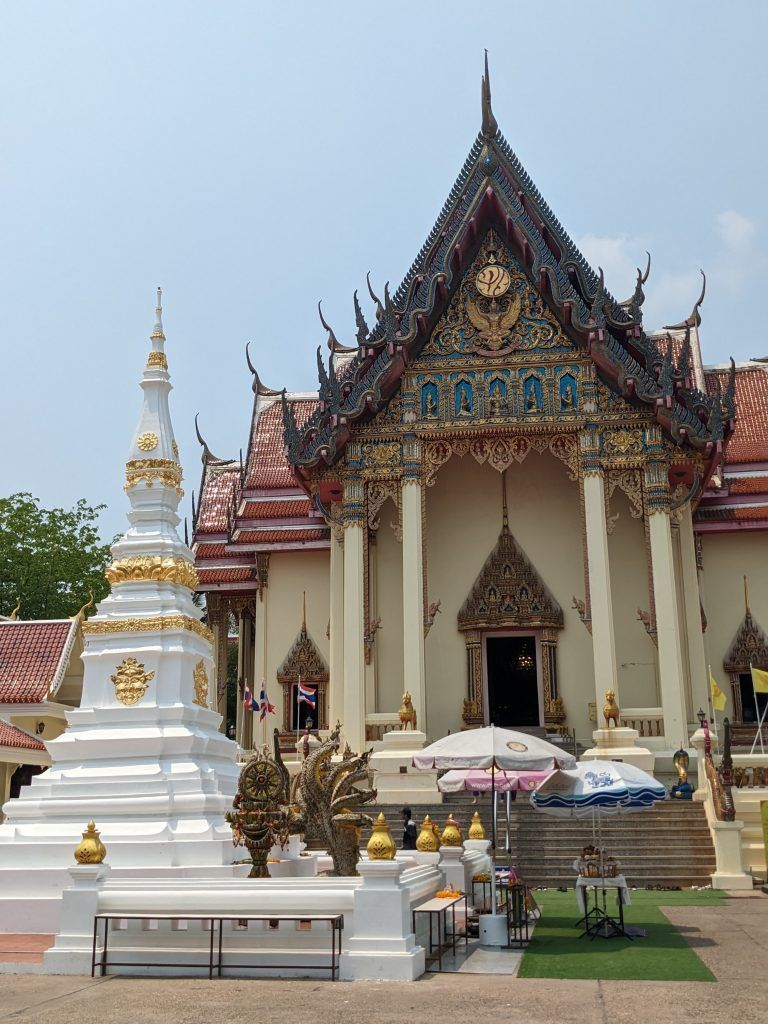


For me, the most interesting part of Nong Khai was the small park of Sala Keoku. If you enjoyed my pictures of Buddha Park in nearby Vientiane, you’ll enjoy these. It is the sister park of Buddha Park also created by the Lao/Thai artist Luang Pu Bunleua Sulilat. Per Wikipedia: “Concerned about the political climate in Laos after the 1975 communist revolution, Sulilat crossed Mekong fleeing to Thailand. In 1978, he commenced the construction of a new sculpture garden, Sala Keoku, located across the river from the old one.” It’s not nearly as big or as interesting as his first park, but it still has a number weirdly wonderful Buddha and Hindu sculptures.


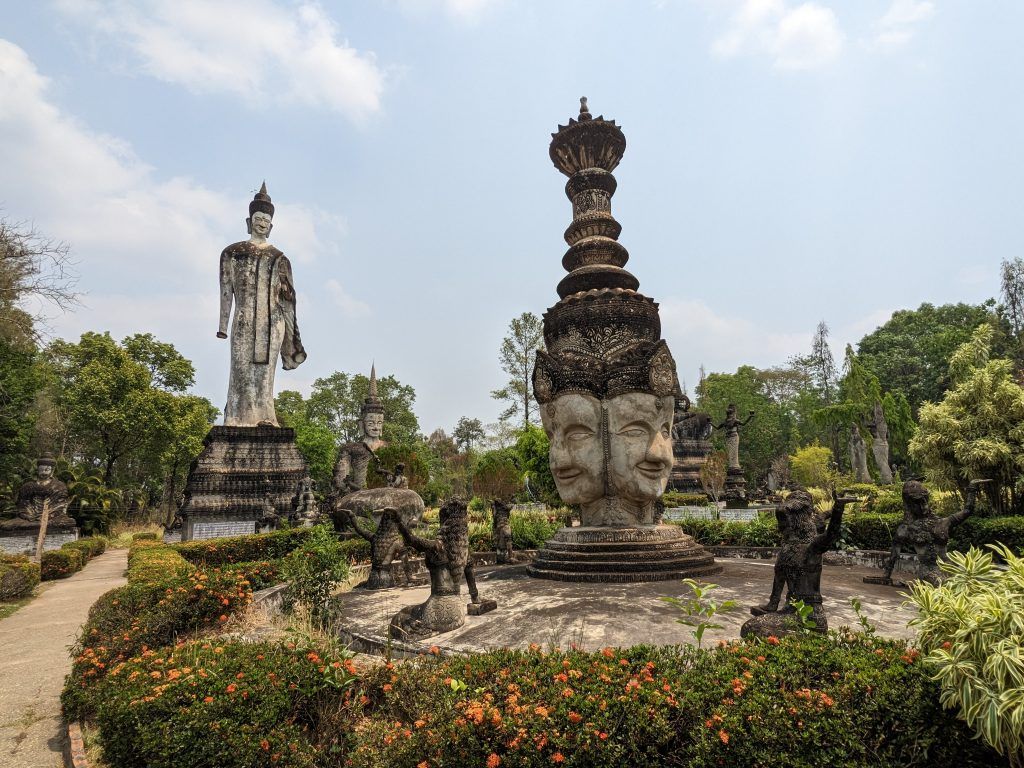


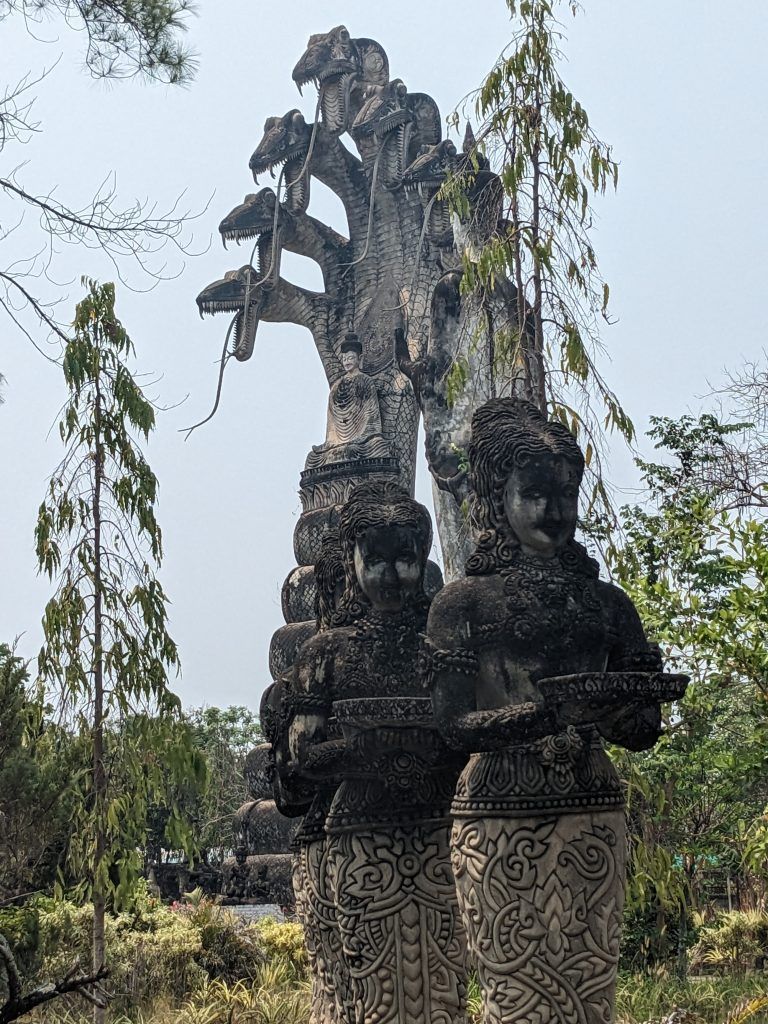

I stayed in a charming guesthouse just around the corner from the Mekong River.



Nakhon Ratchasima and The Ancient Ruins of Phimai
This is what Lonely Planet wrote about Phimai. “Phimai is one of the most impressive Khmer ruins in Thailand, both in its grand scale and its intricate details. Though built as a Mahayana Buddhist temple, its carvings feature many Hindu deities, and many design elements – most notably the main shrine’s distinctive prang tower – were later used at Angkor Wat. There has been a temple at this naturally fortified site since at least the 8th century, though most of the existing buildings were erected in the late 11th century by Khmer King Jayavarman VI.”
Since I won’t be heading to Camodia and Angkor Wat until December, I thought it would be nice to see this site. It actually was was a little underwhelming. The designs were beautiful, but the scale wasn’t that large. Except for the primary prang tower, most of the ruins really were ruins. There was mostly a lot of rubble scattered around a nice, large park-like area.
Of course, my impression of the ruins could also have been tempered by the fact that I decided to rent a scooter to visit, which ended up being a 190 km (120 miles) roundtrip ride on freeways (on the way out) and highways (on the longer, but less stressful, way back) in 100 degree heat (about 38 celsius). Next time I will just take the much easier 1.5 hour local bus from Nakhon Ratchasima!

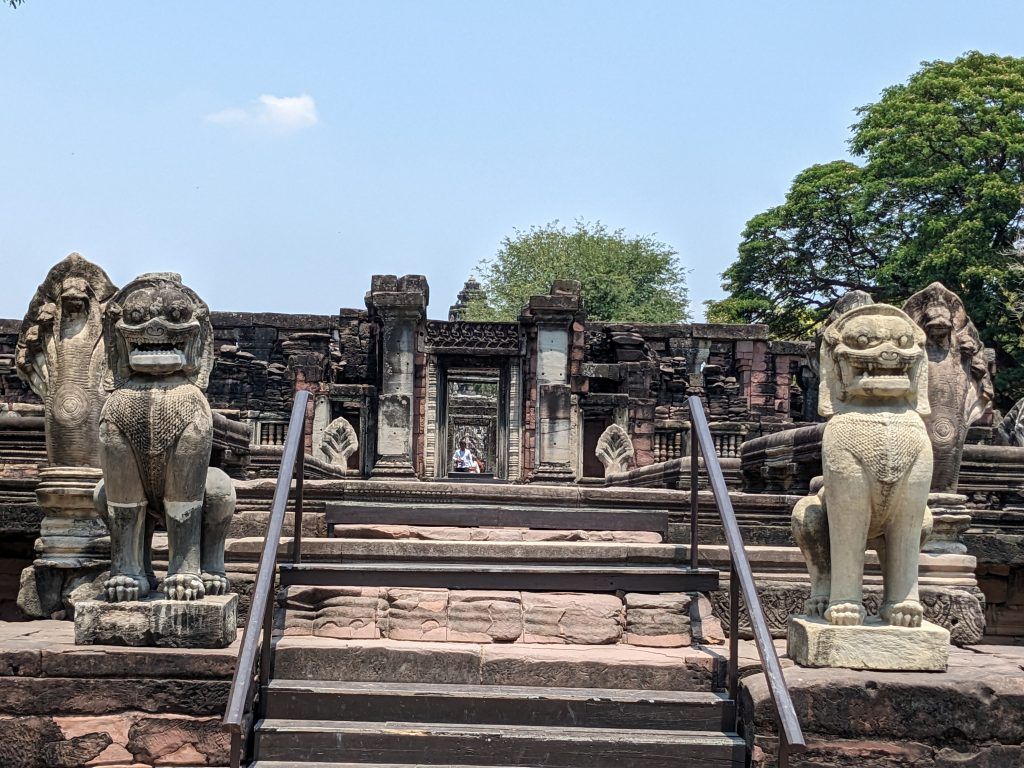
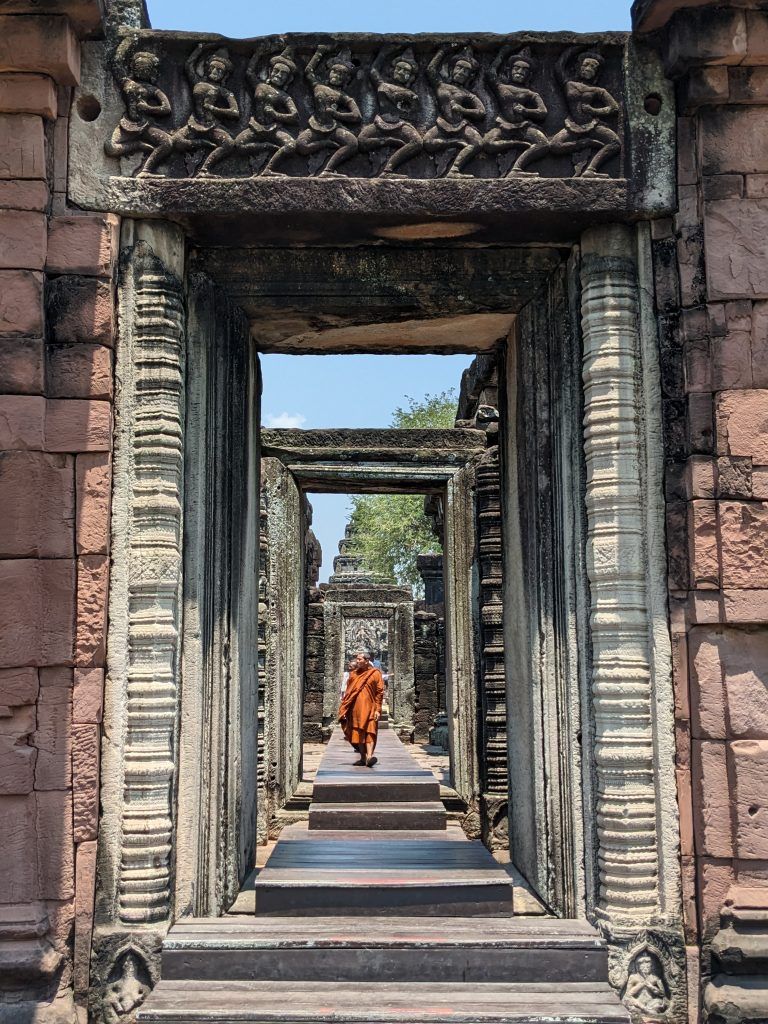



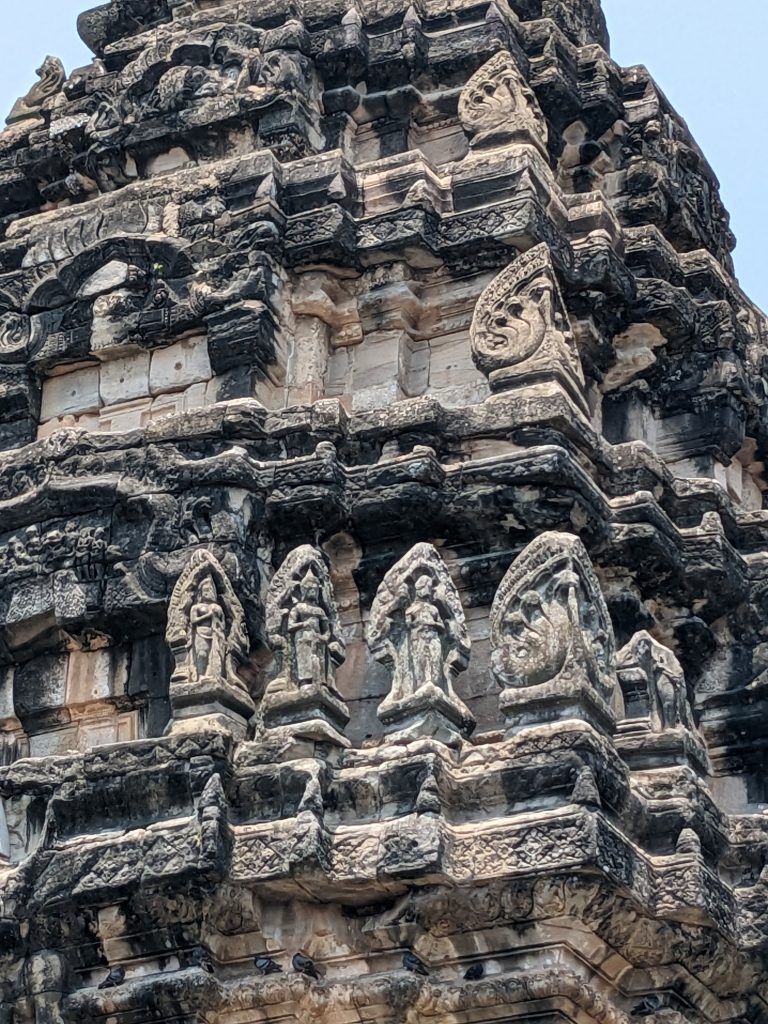
I stayed in the nearby city of Nakhon Ratchasima. It’s a really nice city with a downtown area surrounding by four canals, which is a little like a smaller version of the old city in Chiang Mai. It just doesn’t have nearly the architecture and historical significance of Chiang Mai.
What it does have is the Thao Suranaree Festival. It’s in honor of Ya Mo, a local heroine who defeated an invading Laos army 200 years ago and saved Thailand from defeat. It’s a fascinating story. Per Wikipedia: “In 1826, the King of Vientiane, Anouvong invaded Siam, seeking complete independence. Anouvong’s forces seized the city of Nakhon Ratchasima by a ruse when the governor was away. The invaders evacuated the inhabitants, intending to resettle them in Laos. Lady Mo is credited with saving her people. The generally accepted version is that, when the Lao invaders ordered the women to cook for them, Lady Mo requested knives so that food might be prepared. That night, when the invaders were asleep, she gave the knives to the imprisoned men. They surprised the Lao troops, who fled, and the prisoners escaped. Thai King Rama III soon sent an army in pursuit, led by General Sing Singhaseni. He defeated Anuvoung’s forces in three days of fighting and completely destroyed Anuvoung’s capital city of Vientiane. King Rama III awarded her the title Thao Suranari, (or Lady Suranari – “the brave lady”) in recognition of her courageous acts.”
The festival starts on March 26 and ends on April 2, which was my first full day there. The entire old city was one crowded, happy night market. The metropolitan region of Nakhon Ratchasima is listed at having around 450,000 people. I think all of them were there that night. It was packed and went on for endless blocks. And I didn’t see any other Westerners in the crowded medley. I spent a couple hours walking around in a happy daze after my long ride from Phimai, just grazing from the abundant stalls. I think I spent less than $20 in all for a ton of food and treats.



I stayed in a really, nice modern hotel a few blocks from the city center.
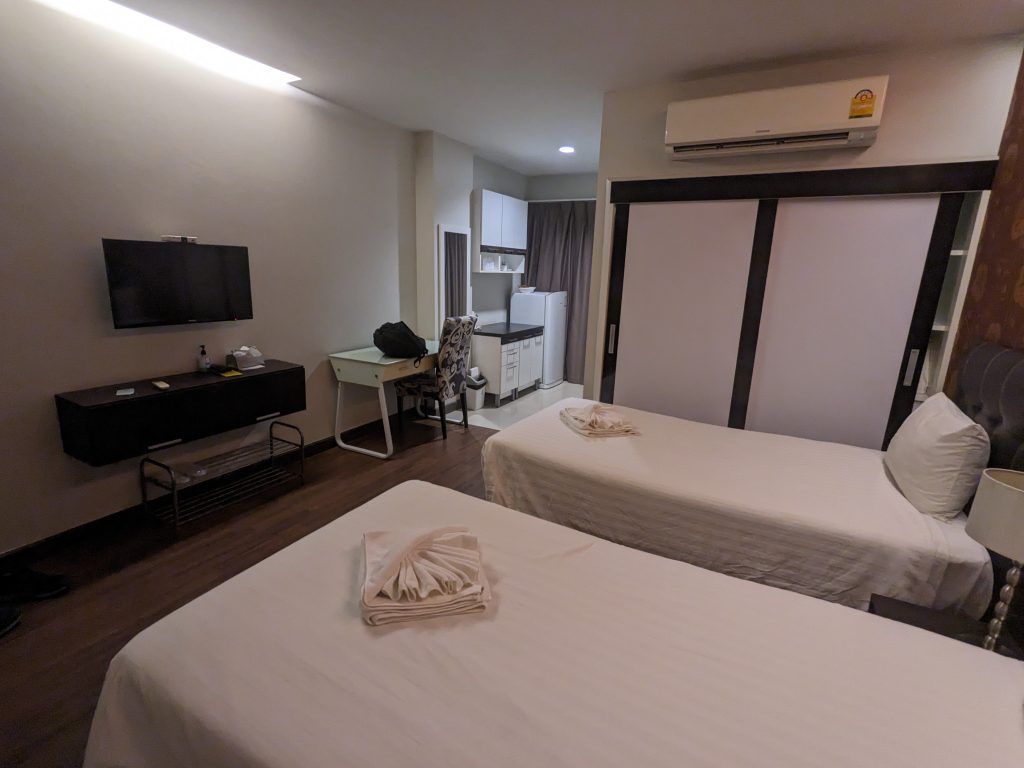
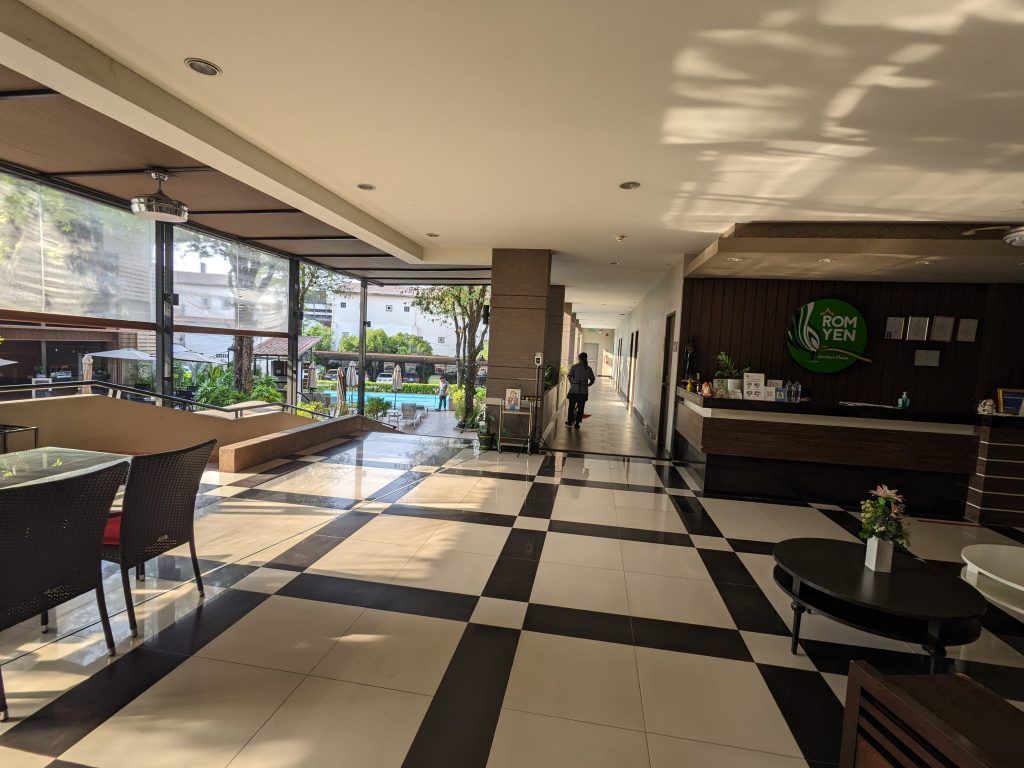
Khao Yai National Park
Khao Yai National Park was founded in 1962 and is Thailand’s oldest and third largest national park. The park is just a few hours from Bangkok and is in the western part of the Sankamphaeng Mountain Range. Our guides were amazing and they had us running all over the park to find different wildlife in the 1.5 days we were there.
The stars of the park are elephants. Unfortunately, we didn’t see any. We did get within 100 meters of a large male; we could hear it moving in the bush and breathing, but the foliage was so dense we couldn’t see it. Both guides fanned out in different directions to try to find better viewing spots, but the forest was too thick.
So, for us, the real stars became the gibbons. We could hear them sometimes and, at one point we came across a nice sized troop of both white and black gibbons moving through the forest together. They are notoriously shy creatures, so to see so many of them this clearly was very special. As you can hear on the videos, our guide was very excited.



On our first night there we visited two bat caves. At the first one we went inside in the late afternoon while they were still mostly sleeping. It was pitch black in the cave, so the photos were a bit hard to get with us only using our flashlights to illuminate the cave.
You can see a few of them hanging on the ceiling.

And some were starting to fly around already.

It’s kind of fuzzy, but you can see six of them hanging face down above us.

One dark bat hanging down.

When our guides found large, harmless insects in the cave, they’d have us volunteer to have them walk over us. In this case, I made friends with a long legged centipede. We wore masks because of the risk of airborne fungus from the bat guano.

The cave was next to a Buddhist temple and the monks would use the cave as a silent place to meditate. So there were various Buddhas in different parts of the cave; this one next to our exit stairs.

The main temple outside the cave.

Just before sunset we went to a more famous bat cave. It was high up in this hill. Each night over 2 million bats would leave for their evening hunting. It took over 40 minutes for all them to leave while we were there.



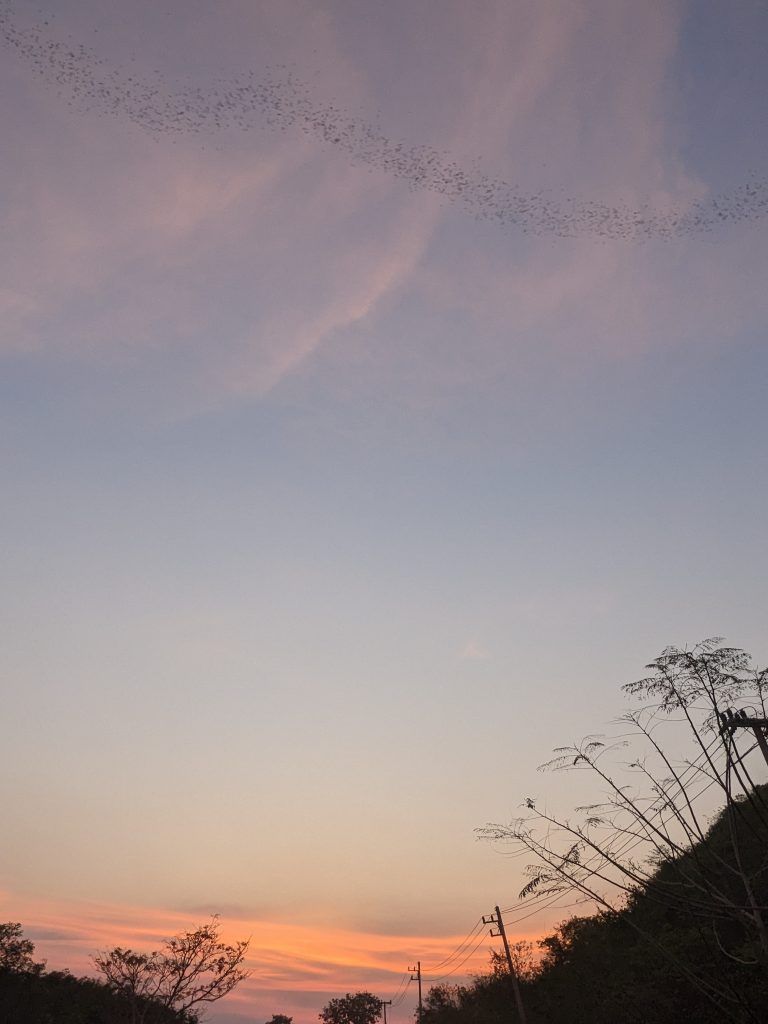
Near the end of our second day we got a rare sighting of a mother jackal and her four cubs off in the distance in a field near the road.


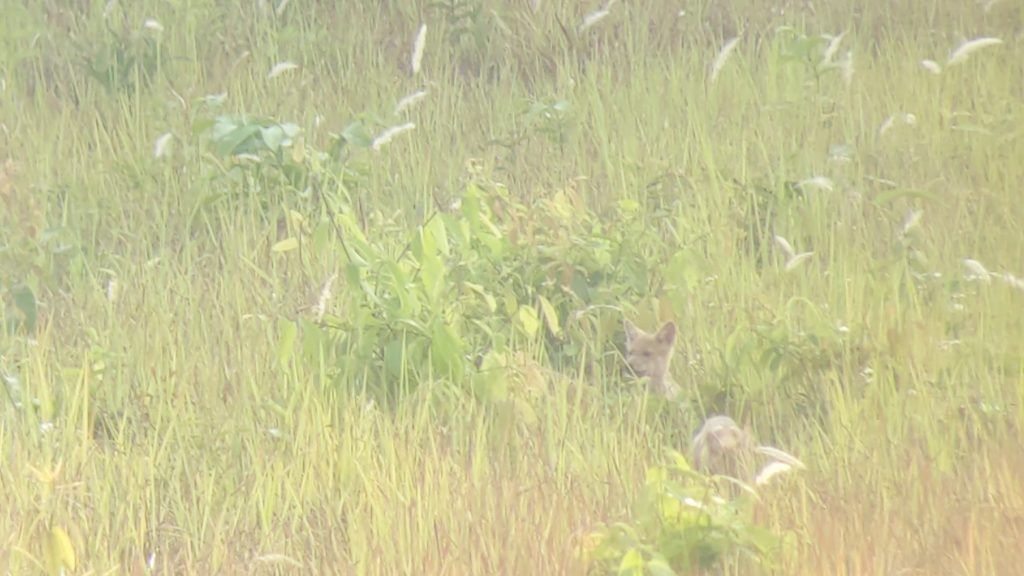
As we were walking through the forest we saw two local photographers set up under a blind. There was a wreathed hornbill nest in the tree in front of them and they have been waiting a couple of hours for one of the parents to return to feed their young. About 10 minutes after we walked away we saw a hornbill fly over us. So we ran back to the blind and got some nice pictures of the father just outside the nest feeding the chicks inside.


Here is a colorful green bee-eater on a telephone wire in the distance.

A small monitor lizard crossing the road.

There were a lot of deer around, including one big buck that was just casually sitting in front of some of the cabins in the park.

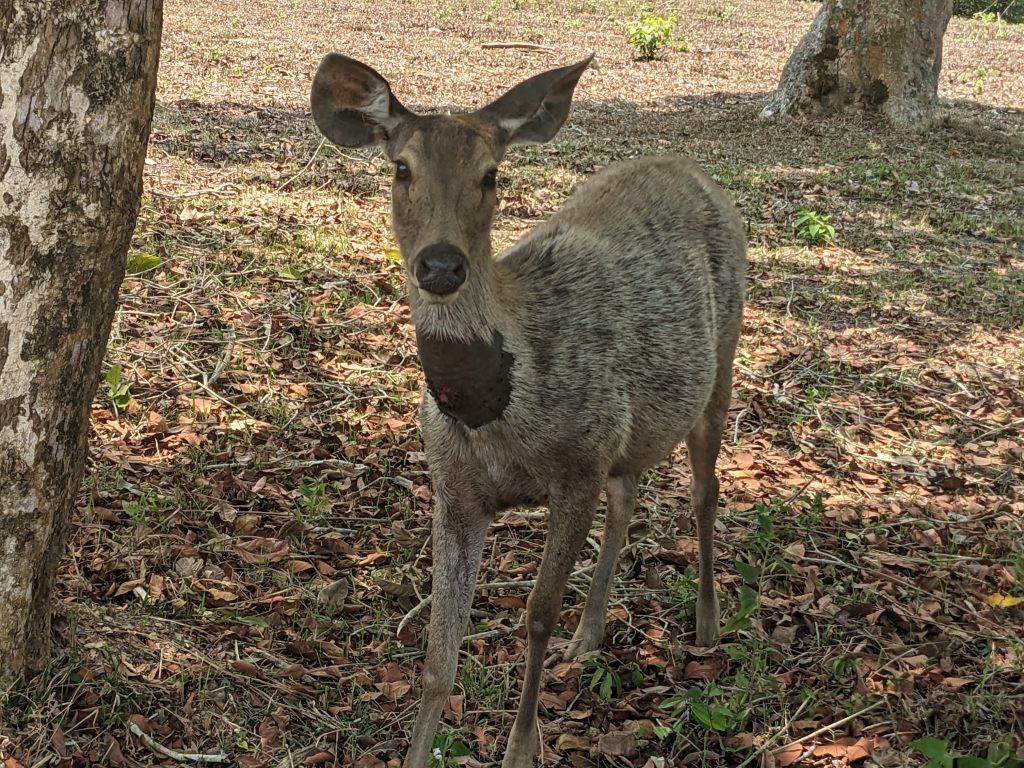



One of the big attractions of the park is the waterfall that Leonardo DiCaprio jumped off of in the movie The Beach. It didn’t look like much in the dry season…

…but yes, it was that waterfall.
In the forest, many times its the smallest things that are the most interesting. Here are some insect eggs in a kind of nest.

Some type of horned beetle.
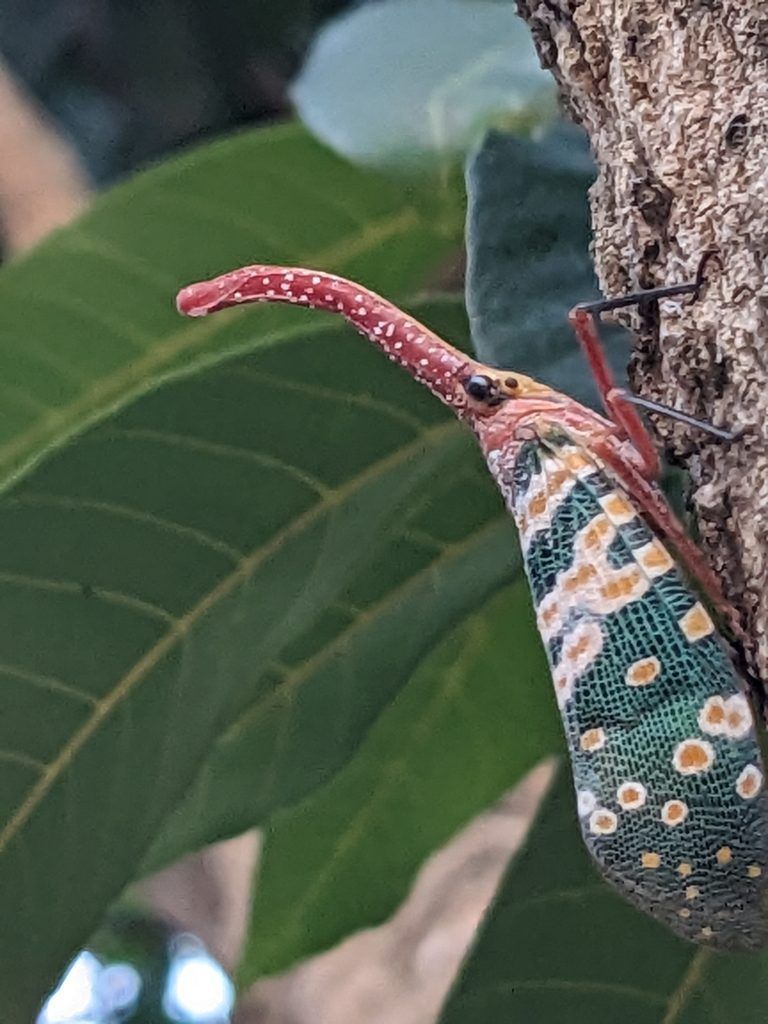
An abandoned cicada shell; they were pretty loud most of the day.

A large green scorpion in its hole.

A 2-3 meter long green snake in a nearby tree.
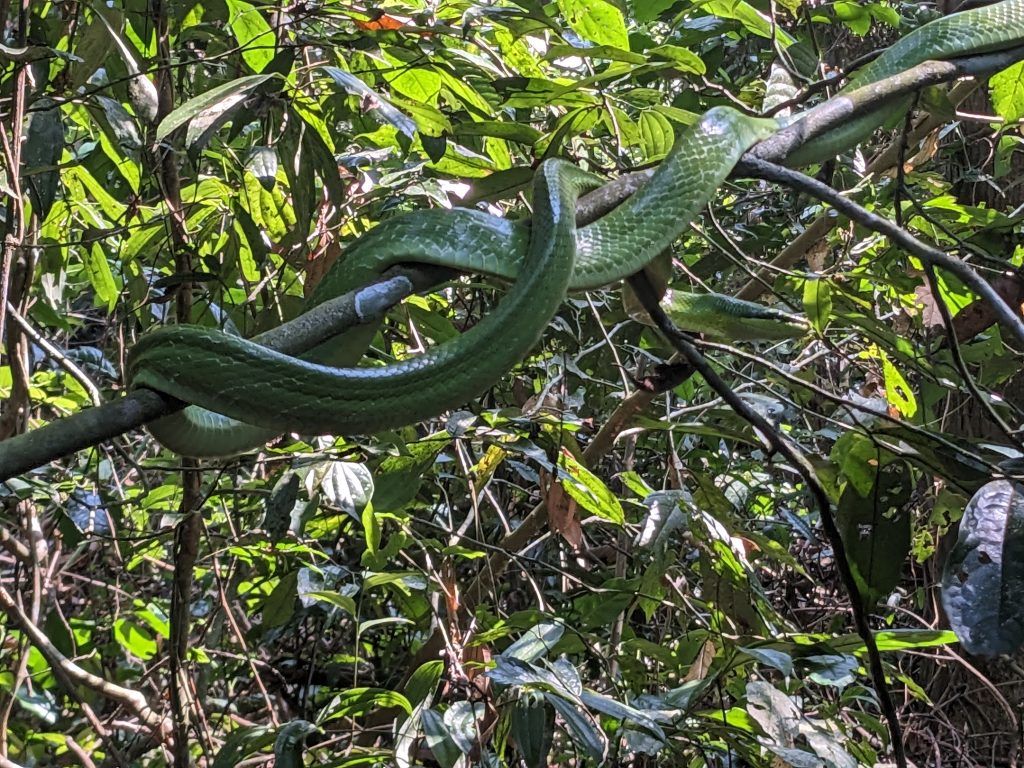
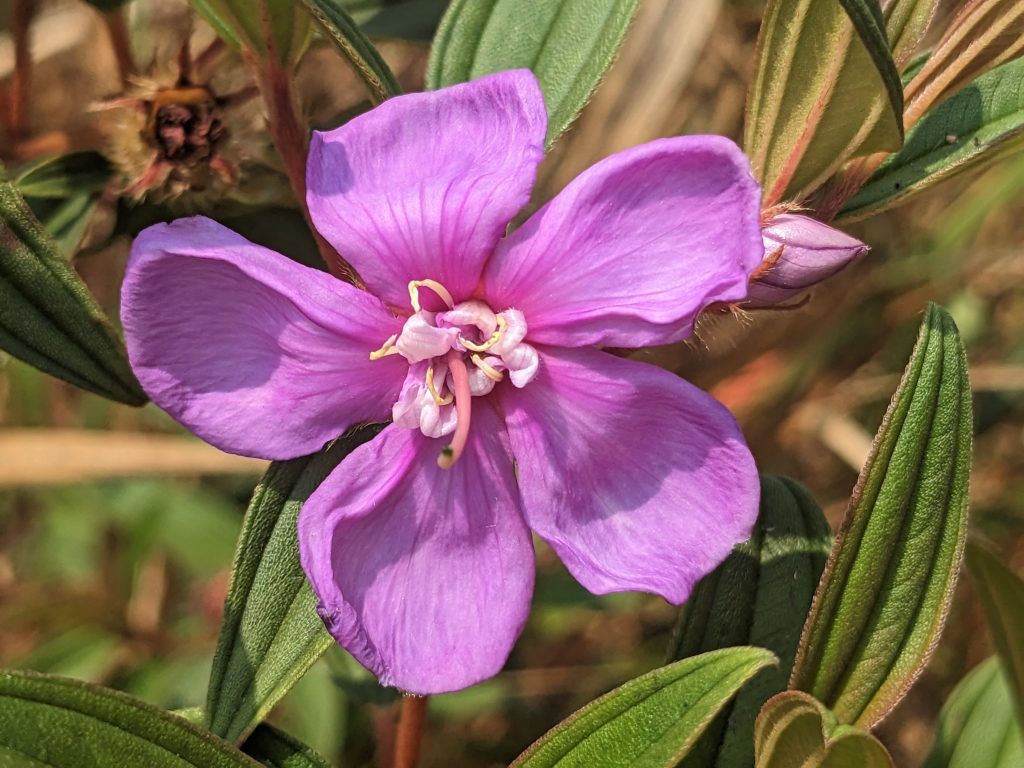
A fig tree estimated to be over 600 years old where you can actually walk between the roots, as these Thai girls were doing ahead of us.



These monkeys looked cute, but they were actually very obnoxious. If you had any food or a bottle of water out, they would actually attack you for it. We saw it happen a couple of times in one of the parking lots.


Some fuzzy pictures of a cute baby navigating through a tree.


